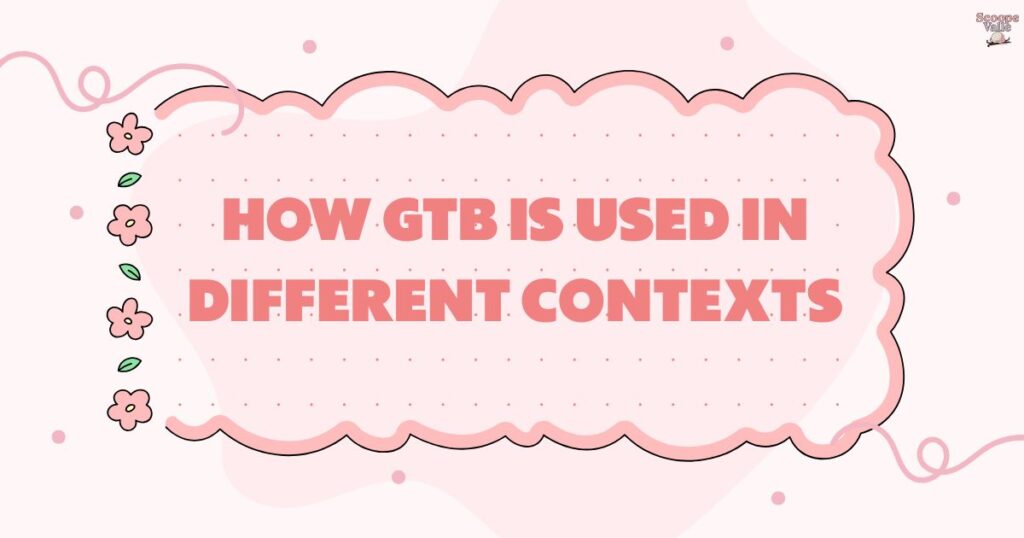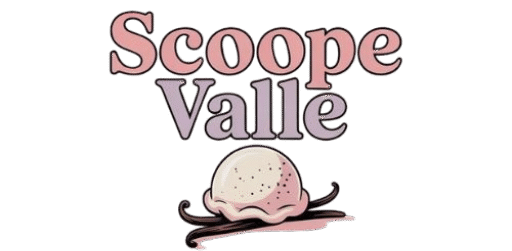In today’s fast-paced digital world, short forms, slang, and abbreviations dominate online communication. Whether you are chatting with a friend, scrolling through social media, or taking part in a late-night gaming session, chances are you have seen the term GTB pop up.
For someone who isn’t familiar, it may seem confusing at first. But once you understand what GTB means, when to use it, and how others respond to it, you’ll find it’s one of the most useful digital shortcuts out there.
This updated guide will explain the meaning, origins, usage, examples, and cultural impact of GTB, while also showing you how to use it properly in different contexts. By the end of this article, you’ll not only know what GTB stands for but also be able to use it confidently in your everyday conversations.
What Does GTB Mean?
GTB stands for “Got to Go” or sometimes “Got to Bounce.”
It’s a quick and informal way of saying you need to leave, sign off, or end a conversation. Instead of typing out a full sentence like “Sorry, I have to leave now”, people simply use GTB.
- Got to Go → most common meaning.
- Got to Bounce → less common, but popular among younger audiences.
Essentially, GTB is a digital goodbye that signals you are busy, stepping away, or ending an interaction without being rude.
Also read: IDT Meaning in Text: A Complete Guide (Latest)
Real-Life Examples of GTB in Use
To better understand GTB, let’s look at how it appears in everyday conversations.
Example 1: Texting
Friend 1: “Want to call later tonight?”
Friend 2: “Can’t, GTB. My shift starts soon.”
Example 2: Gaming
Player 1: “We’re about to take down the boss!”
Player 2: “Sorry, GTB my Wi-Fi is acting up.”
Example 3: Social Media
Comment: “Loved this thread, but GTB. Talk tomorrow!”
The Origins and Evolution of GTB
The early 2000s marked the rise of instant messaging platforms like AOL Messenger, MSN, and Yahoo Chat. During this time, users wanted faster ways to type, and that’s when short forms and acronyms exploded.
GTB first appeared as part of this trend. Similar to GTG (Got to Go) and BRB (Be Right Back), it served the same purpose: saving time while chatting.
Over the years, GTB spread beyond chatrooms into text messages, social media platforms, and gaming chats. By the 2010s, it was already widely recognized across the globe.
Today, GTB is not only understood by teens but also by adults who regularly use messaging apps like WhatsApp, Telegram, Discord, and Twitter/X. Its popularity remains strong because of its simplicity and universal meaning.
How GTB Is Used in Different Contexts

One of the main reasons GTB has lasted so long is its flexibility. People use it in personal chats, social media posts, and gaming communities. Let’s break down each context.
1. Texting
Text messaging is the most common place where GTB shows up. It helps users save time while still being polite.
Example:
- Friend: “Are you coming to the party?”
- You: “Yes, but GTB for now. I’ll text when I’m free.”
2. Social Media
On platforms like Twitter, Instagram, and Facebook, GTB often appears in comments or captions.
Example:
- Post: “This concert is amazing!”
- Comment: “GTB now, but I’ll share more pics later.”
Here, GTB signals that you’re leaving the platform or ending interaction for the moment.
3. Gaming
Gamers use GTB when they need to log off suddenly. Since online matches rely on teamwork, GTB serves as a quick explanation.
Example:
- Teammate: “We need you for the next round.”
- You: “GTB—dinner’s ready. Back in 20.”
Common Misconceptions About GTB
Because there are so many acronyms online, it’s easy to confuse GTB with others. Here are some common misconceptions:
GTB = GTG (Good to Go)
False. GTG can mean “ready” or “leaving,” while GTB always means leaving.
GTB = GB (Goodbye)
False. GB is a simple farewell. GTB specifically emphasizes leaving due to some reason.
GTB is rude.
Not true. Tone and context matter. If you type GTB without explanation, it may sound abrupt, but adding a reason makes it polite.
Similar Terms and Alternatives
GTB is just one of many terms used for leaving a conversation. Some alternatives include:
- GTG (Got to Go) → Similar but slightly broader.
- BRB (Be Right Back) → Temporary departure.
- TTYL (Talk to You Later) → Ending a chat but with intention to continue.
- AFK (Away From Keyboard) → Common in gaming.
How to Respond to GTB
How should you reply when someone says GTB? That depends on your relationship and the situation.
- Casual: “Okay, catch you later!”
- Friendly/Funny: “GTB? Don’t forget me when you’re famous!”
- Professional: “Understood. Let’s reconnect tomorrow.”
- Polite: “Take care, talk soon!”
Regional and Cultural Differences
Although GTB is mainly used in English-speaking countries, its meaning is easy to grasp worldwide.
- In the United States, people might say “Gotta jet” or “Heading out.”
- In India, people might replace it with “Chalo” (let’s go).
- In the UK, alternatives like “I’m off” or “See ya” are common.
GTB in Online Communities and Dating Apps
GTB is common in online communities, forums, and dating apps.
- On Reddit/Discord: People type GTB to excuse themselves mid-discussion.
- On Tinder/Bumble: Someone might write, “GTB for now, but I’ll message later.”
Hidden or Offensive Meanings
Unlike many slang terms, GTB has no hidden or offensive meanings. That’s why it’s considered safe for most audiences.
Still, tone matters. For example, just typing “GTB.” and logging off may sound abrupt, while “GTB, dinner’s ready. Talk soon!” feels friendlier.
Is GTB Suitable for Professional Communication?
Generally, GTB is considered informal.
- ✅ Okay to use: with friends, coworkers in casual chats, or gaming buddies.
- ❌ Avoid in: professional emails, formal client meetings, or academic writing.
Instead, use more professional phrases like:
- “I need to step away.”
- “Let’s continue this later.”
- “I have to leave now, but I’ll follow up.”
FAQ’s
What does GTB stand for?
GTB means Got to Go or Got to Bounce.
Is GTB rude?
Not usually. As long as you add context or a friendly note, it’s perfectly fine.
Can I use GTB at work?
It’s better to use formal phrases in professional settings.
Is GTB the same as GTG?
No. GTG can mean “ready” or “leaving,” while GTB strictly means you’re leaving.
Is GTB used worldwide?
Yes, though local slang alternatives may be more common in some countries.
Conclusion
GTB is a simple, flexible, and widely recognized abbreviation that helps make digital conversations quicker and smoother. From texting and gaming to social media and online communities, GTB has become a go-to phrase for signaling departure.
The key to using GTB effectively is context and tone. In casual chats, it works perfectly. But in professional settings, it’s better to stick with more formal wording.
Tylor John, with five years’ experience, beautifully crafts information on all topics and inspiring readers worldwide with positivity, faith, creativity, love, and hope.

